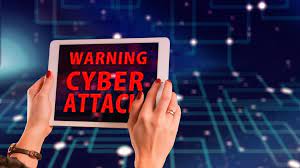Cyber security has become a topic of paramount importance in our digital age. With cybercriminals becoming more sophisticated in their tactics, it’s becoming increasingly essential to protect ourselves from their malicious attacks. But how do we do that? How do we safeguard our digital lives in a world where technology is evolving at an astonishing pace? The answer is simple: we need to stay informed and take proactive steps to protect ourselves. Whether you’re a tech-savvy individual or just starting to dip your toes in the digital waters, the following guidelines will help you stay protected, reduce the risk of falling victim to cyber attacks and keep your personal information safe so that you can enjoy the benefits of the internet without worrying about the risks. So, fasten your seatbelts, and let’s dive into the world of cyber safety.
The first recommendation is to use strong, unique passwords. This means avoiding common words or phrases and instead using a combination of letters, numbers, and symbols. Using strong and unique passwords is essential for ensuring the security of your online accounts. A strong password is one that is difficult for others to guess or crack, while a unique password is one that is not used for any other account or service. Using weak passwords such as “123456” or “password” make it easy for cybercriminals to hack into your accounts and steal your personal information, such as your banking details or social security number. This can lead to identity theft, financial loss, and other serious consequences.
As software evolves, developers may optimize its code to make it faster, more efficient, and more user-friendly. By installing updates, you can take advantage of these improvements and enjoy a better user experience. To ensure that your software is always up to date, you should enable automatic updates whenever possible. Most modern operating systems and software applications have an option to automatically download and install updates in the background. This ensures that you have the latest security patches and feature enhancements without having to manually check for updates
To create a strong and unique password, it’s recommended to use a combination of uppercase and lowercase letters, numbers, and special characters. The longer the password, the better, as longer passwords are more difficult to guess or crack. It’s also important to use different passwords for different accounts. This way, if one password is compromised, the hacker will not have access to all of your other accounts. In addition, it’s recommended to use a password manager, which can generate strong and unique passwords for you and store them securely. This eliminates the need to remember multiple passwords, making it easier to use unique passwords for every account.
“Think before you click” is a phrase that emphasizes the importance of being mindful of the links you click on while browsing the internet. It is important to always be cautious before clicking on any links or downloading any files, as doing so can potentially lead to harmful consequences such as identity theft, malware infections, and financial loss. Hackers often use social engineering tactics to deceive users into clicking on harmful links or downloading malicious files.
Cybercriminals can also use phishing emails to trick people into giving away their personal information. They may send emails or messages that appear legitimate and urge the recipient to click on a link or download an attachment. Once the link is clicked or the file downloaded, the hacker can gain access to the user’s personal information or infect their device with malware. To avoid falling victim to these scams, it is crucial to always think before you click.
Before clicking on a link, consider the things such as Is the sender or source of the link known and trustworthy? Does the link or message seem suspicious in any way? Does the link lead to a legitimate website or does it look like a fake website? Is there a chance that clicking on the link could compromise your personal information or device security? By taking the time to think before you click, you can avoid falling prey to scams and keep your personal information and device safe. It is also important to have anti-virus software installed on your device and to keep it updated, as well as to regularly back up your important files to protect against data loss.
By regularly updating software and enabling automatic updates, people can stay ahead of potential threats. Keeping software updated is crucial for ensuring the security and stability of your computer. Software updates contain bug fixes, security patches, and feature enhancements that are essential for optimal performance of your system.
When software is released, it is often tested by the developers to ensure that it is working correctly. However, as time goes by, vulnerabilities may be discovered, and hackers may try to exploit them. When software vendors become aware of these vulnerabilities, they release updates to fix them. If you fail to install these updates, your system may be vulnerable to attacks, and your data may be compromised. In addition to security, updating software can also improve performance.
As software evolves, developers may optimize its code to make it faster, more efficient, and more user-friendly. By installing updates, you can take advantage of these improvements and enjoy a better user experience. To ensure that your software is always up to date, you should enable automatic updates whenever possible. Most modern operating systems and software applications have an option to automatically download and install updates in the background. This ensures that you have the latest security patches and feature enhancements without having to manually check for updates.
Finally, Multi-factor authentication (MFA) is a security feature that provides an additional layer of protection to your online accounts. MFA requires users to provide two or more forms of authentication to access their accounts, making it more difficult for hackers to gain unauthorized access. The first factor is typically a password, while the second factor could be a fingerprint scan, a code generated by an authenticator app, or a text message with a one-time code.
By requiring a second factor in addition to a password, MFA reduces the risk of password-based attacks like phishing, where a hacker tries to trick you into revealing your password. Enabling MFA is an easy and effective way to improve the security of your online accounts. Many popular websites and services, including social media platforms, email providers, and financial institutions, offer MFA as an option.
To turn on MFA, simply go to the security settings of the website or service and look for the option to enable two-factor authentication or multi-factor authentication. Follow the instructions provided to set up the second factor, which could involve downloading an authenticator app, registering a phone number, or using a security key. While MFA cannot guarantee that your accounts will never be compromised, it significantly reduces the likelihood of a successful attack. By taking the extra step to turn on MFA, you can protect your sensitive information and safeguard your online identity.
Stay safe online!























